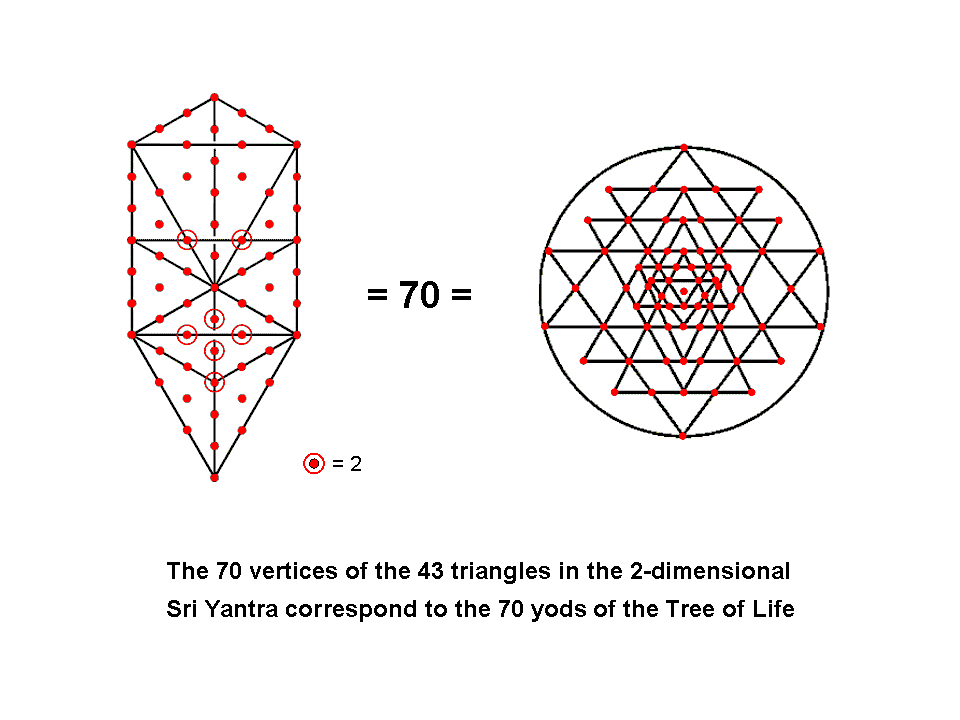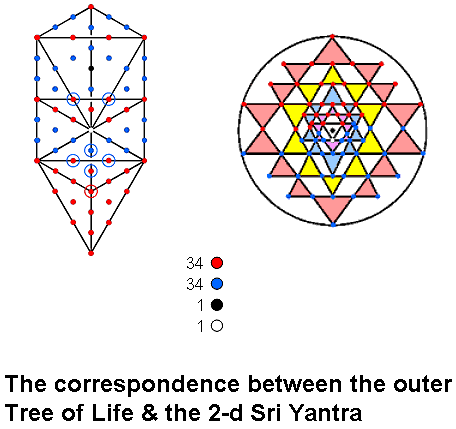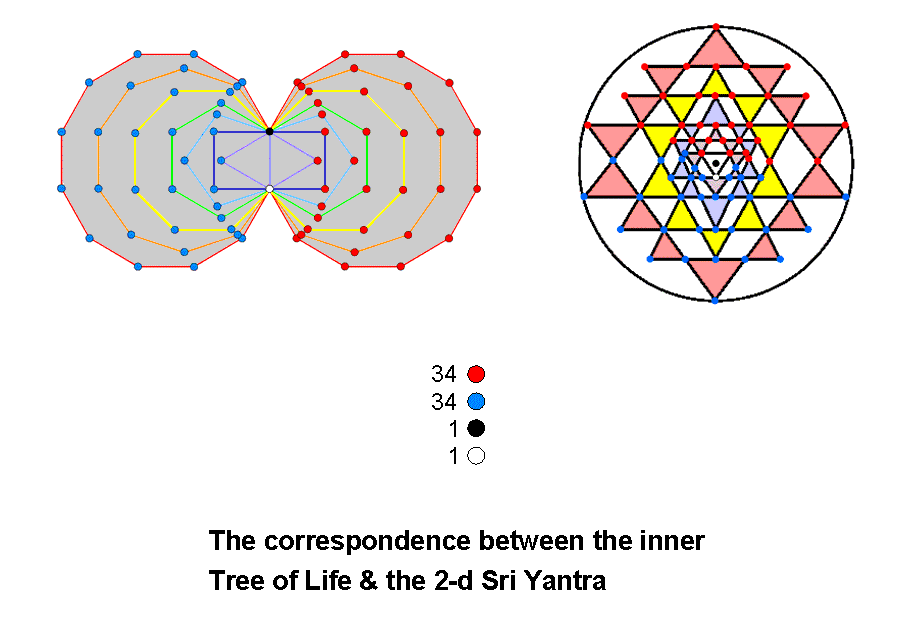

Converted into tetractyses, the 16 triangles of the outer Tree of Life contain 70 yods. Just as the measure of human life is 70 years, according to Psalm 90:10 in the Bible, so the Tree of Life representation of Adam Kadmon (אדם קדמזן), or "Heavenly Man," embodies the same parameter 70. Is this more than coincidence?
The 2-dimensional Sri Yantra contains 70 points. They are made up of the bindu (a Sanskrit term, meaning "dot" or "point") at the centre of the central triangle and the 69 corners of the 43 triangles that surround it. The bindu is the source of all manifestation — both physical and superphysical.
The outer Tree of Life consists of its root, trunk & branches. Its root comprise the two yods (one white, coinciding with Tiphareth, the other black, coinciding with Daath) whose projections onto the plane of the (7+7) enfolded polygons of the inner Tree of Life coincide with the endpoints of the root edge. The trunk consists of the 34 other yods (coloured red) that make up the mathematical sequence of the point (Kether), line (Chokmah-Binah), triangle (Chesed-Geburah-Tiphareth) & tetrahedron (Netzach-Hod-Yesod-Malkuth). The branches comprise the 34 blue yods in the 11 tetractyses outside the root and trunk of the Tree of Life. The black yod corresponds to the bindu in the 2-dimensional Sri Yantra, the white yod corresponds to the lowest (white) corner of its central triangle, the 34 blue yods correspond to the 34 blue corners of the 21 triangles in the lower half of the Sri Yantra and the 34 red yods correspond to the 34 red corners of the 21 triangles in its upper half. The upper and lower halves of the Sri Yantra, respectively, correspond to the root & trunk of the outer Tree of Life and to its branches.
